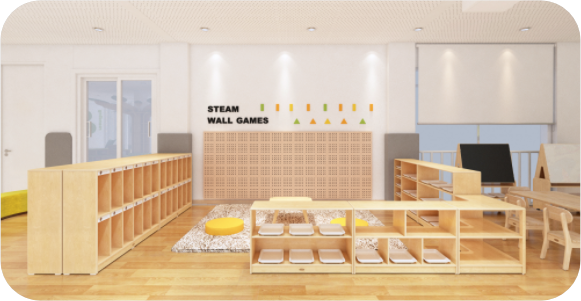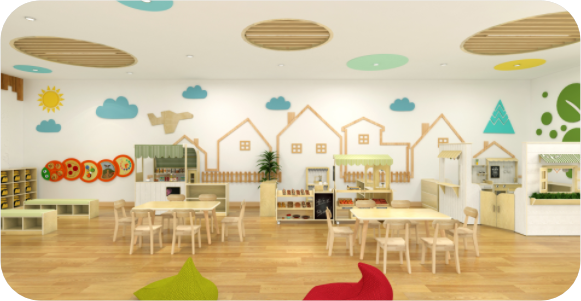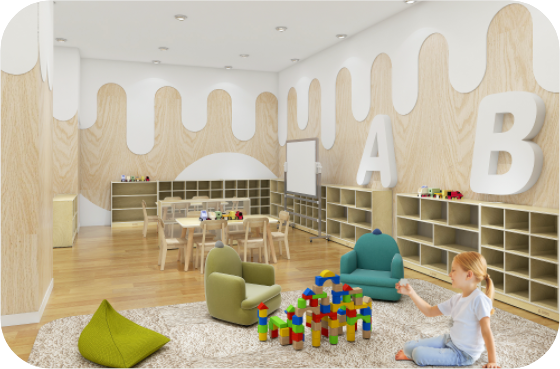Montessori Classroom Design
Montessori Class
“The Montessori classroom design is based on the Montessori education method to provide children with rich teaching aids, create sufficient space and time, so that children can find ways to get along with themselves at an early age, learn how to deal with and accept emotions, and walk into the Meet the “”secret”” space of the inner self.
A Montessori classroom provides children with an environment suitable for development (free environment, sufficient space, rich teaching aids, and focused work) to help children develop their movements, language, intelligence, willpower, and emotions.
A Montessori classroom is an ideal country for countless people who love the Montessori teaching method. Montessori teachers provide a necessary environment for children’s development and growth through every detail of this classroom and provide the children with just-right assistance and guidance so that children can develop independent thinking and have a good character, such as be able to solve problems on their own, have the courage to face setbacks and failures, focus, independence, self-confidence, and full of enthusiasm for learning and life. Lay a solid foundation for the child’s life and create unlimited possibilities for future life.”


Montessori Classroom Setup
Daily Area:
Through visual stimulation, let children learn to observe the size, height, shape, color and recognition of geometric figures, etc.. Through tactile stimulation, let children learn to distinguish objects and distinguish sounds.
Sensory Area:
Through visual stimulation, let children learn to observe the size, height, shape, color and recognition of geometric figures, etc.. Through tactile stimulation, let children learn to distinguish objects and distinguish sounds.
Math Area:
Use common materials and teaching aids in daily life to allow children to pair, arrange, and classify things to make abstract mathematics concrete, cultivate children's ability to analyze, integrate, and judge, thereby enhancing children's logic thinking ability.
Language Area:
not only includes listening, speaking, reading, and writing, but also the cultivation of children's emotional attitudes and behavior habits; it mainly uses games, stories, etc. to gradually cultivate children's listening, speaking, reading and writing skills, so that children can learn to communicate and express , share, read, and form a good moral character.
Science and Culture Area:
Cultivate children's macro international vision, including astronomy, geology, earth science, geography, flora and fauna, history, music, and art, covering almost everything in the universe.





